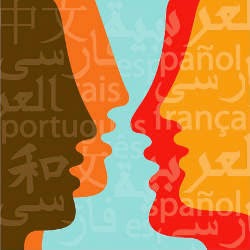Often when we receive a request for translation, our mindset is grounded in the present, our considerations simple: how to provide a high quality translation in the most expeditious way possible. However, some projects require taking a look at the past, instead of a look into the future. Such was the case when we received decades-old land deeds from a client whose family owned property in Turkey when it was still the center of the Ottoman Empire.
The Turkic languages date back an estimated 5500-8500 years and are spoken across continents, though the language spoken in Turkey (modern “Turkish”) is commonly acknowledged to have developed over three distinct periods: the 13th to 15th Centuries, the 16th to 19th Centuries (the height of the Ottoman Empire) , and the 20th Century to Present.
The first of these periods saw the publication of the first Turkish dictionary, the Divini Turki, in 1277, which came at a time when Persian writers and poets were beginning to have a large influence on Turkey’s educated elites. However, the spread of Islam to the region at the start of the 16th century brought with it the Arabic language and script. Thus, as one historian said of the period: “every Persian and Arabic word was a possible Ottoman word…all that was required was that in case of need [the writer or speaker] should give the foreign words a Turkish grammatical form [,an affix].”[i] This mélange of Turkish, Arabic, and Persian, which we call Ottoman Turkish is known to the Turks as Osmanlica, and was used as the administrative and literary language of the time, though it was not used in common parlance.
The mid 1900’s saw the so-called “Ottoman Reformation.” This reformation was a nationalistic response to years of foreign influence, most recently from Europe. “Turkification” of the language gained traction in the upper sets of society, and later at the administrative level when Mustafa Kemal Ataturk led a “language revolution,” or Dil Devrimi. The goal was to eliminate Arabic and Persian grammatical features and borrowed terms in favor of a truly Turkish language. Ataturk sought to step away from Ottoman times, when Turkish vernacular and formal Turkish were so different as to not be mutually intelligible. For example:
In the shadow theatre, the running joke [wa]s that Kargoz speaks Turkish while his sparring partner Hacivat speaks Ottoman. In the play Salincak, Kargoz keeps hitting Hacivat. Hacivat asks him why, but receives only nonsensical answers sounding vaguely like his –to Karagoz- unintelligible questions. Eventually he asks, “Vurmanizdan aksa-yi murad?” (What is your ultimate object in hitting me?). To which Kargoz replies, “Aksaray-da murtad babandir (The turncoat at Akseray is your father.) (Kudret 1968-70:iii.54.) A rough English parallel would be, “Explain your bellicose attitude.” –“How do I know why he chewed my billy-goat’s hat?”[ii]
Beyond revising semantics (words and their meanings) so that such misunderstandings as the one in the joke about the sparring partners would not occur, Ataturk developed a system for using the Latin alphabet such that it was compatible with the phonemes of the Turkish language.
That’s why translating Ottoman land deeds, written in Arabic script, and reflecting an administrative dialect incomprehensible to most Turks alive today, posed a unique challenge to our team. However, Morningside was able to rise to the challenge, and we very much look forward to future projects that require us to take a step back, and remember the rich history from which our modern languages arise.
[i] From A History of Ottoman Poetry, Vol. 1 by Elias John Wilkinson Gibb
[ii] From The Turkish Language Reform: A Catastrophic Success by Geoffrey Lewis


